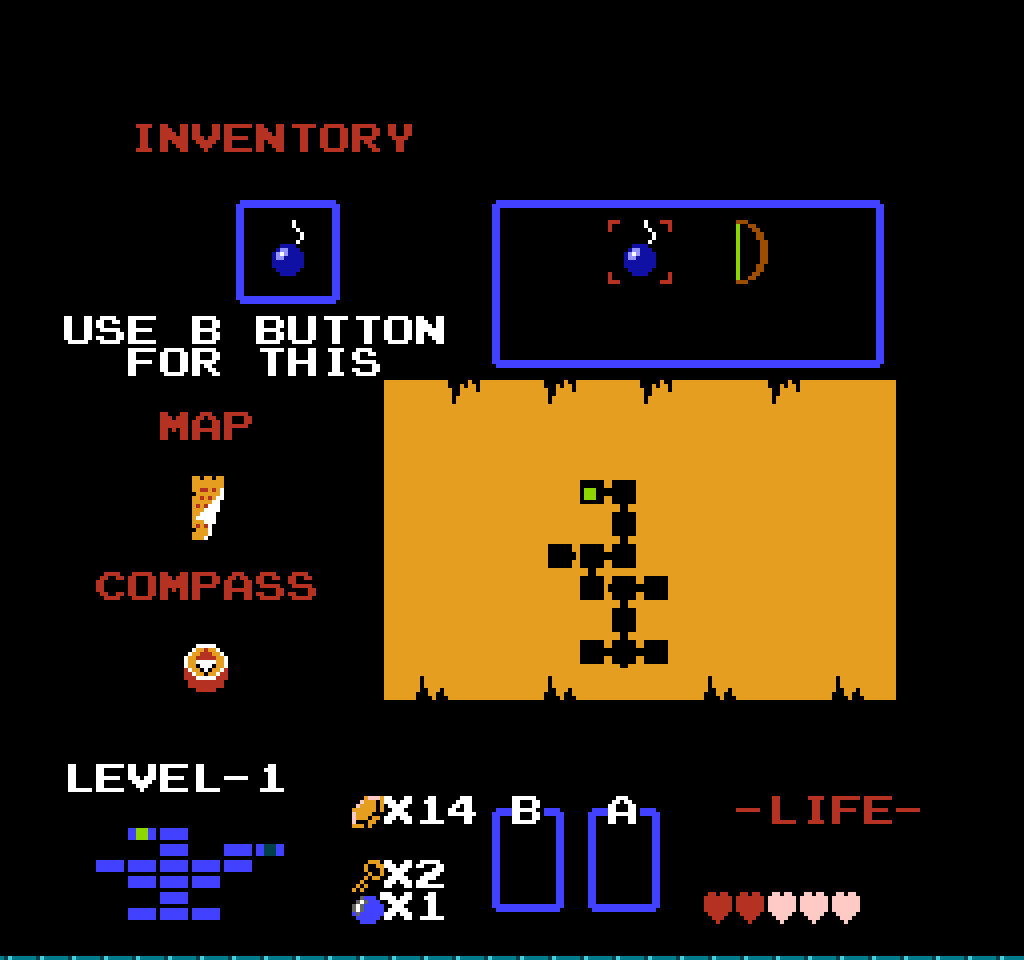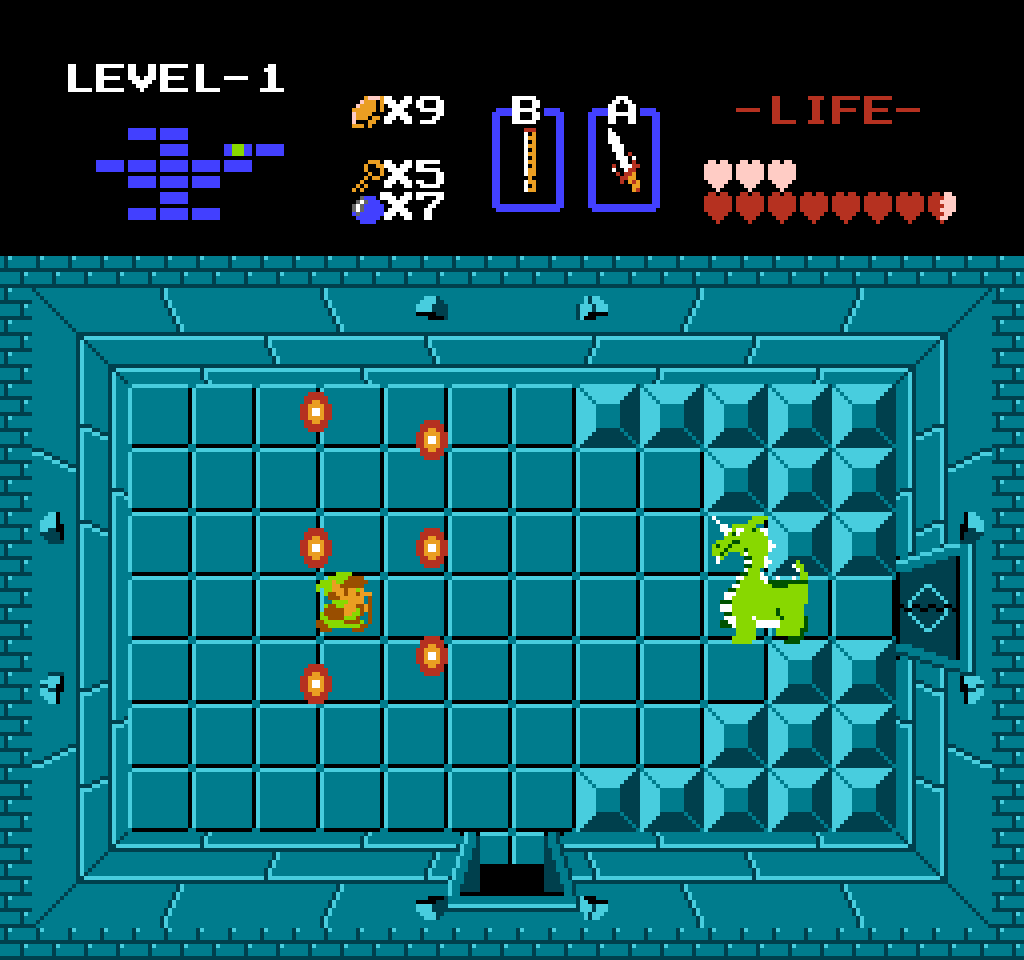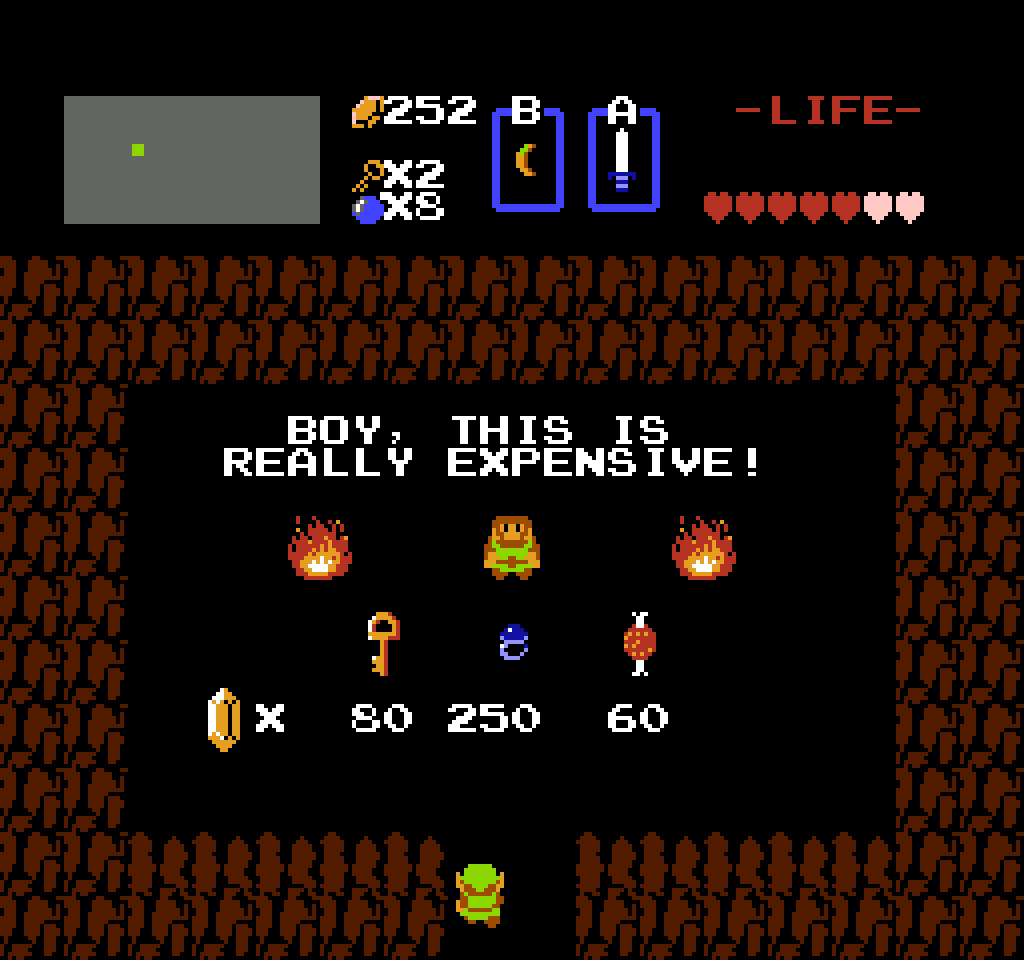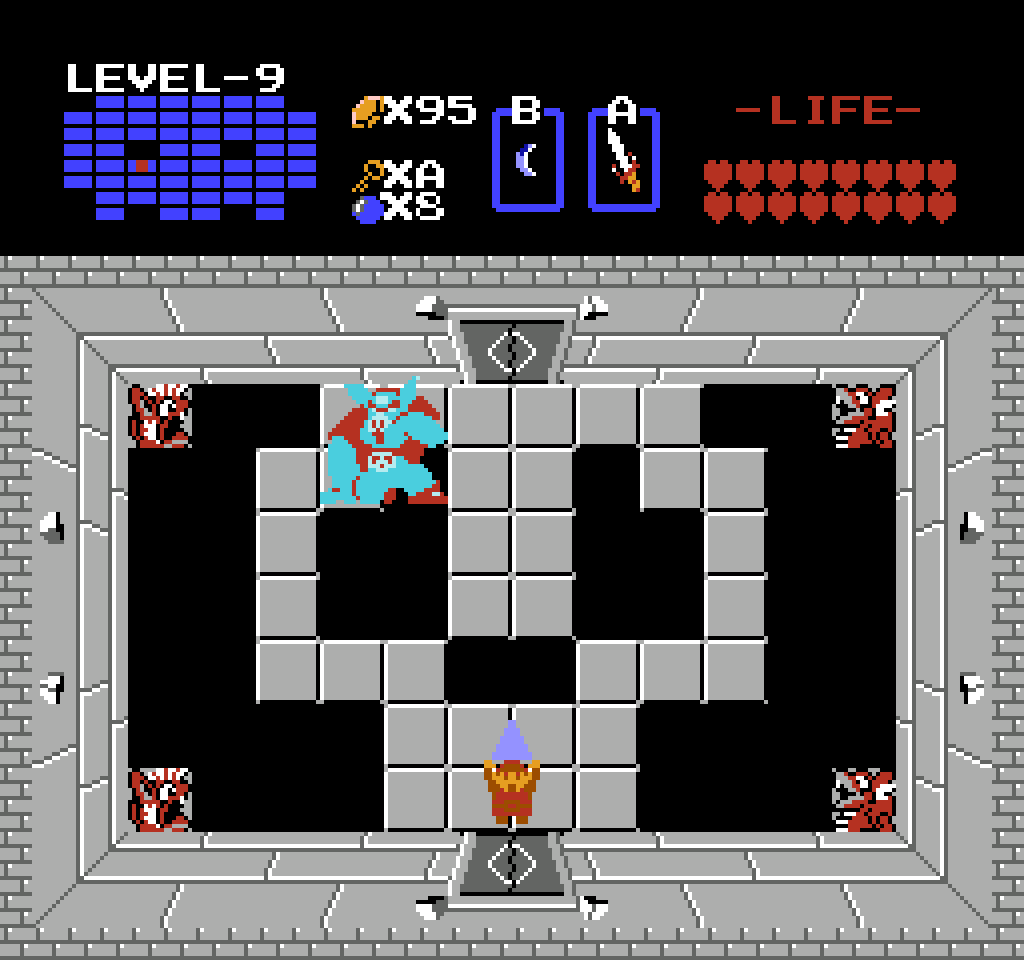 |
Although it was an early game, it’s clear that Nintendo put a lot of work into bringing the first Zelda game to North American players. Everything from attempting to localize the script (rather than simply translate it) to ensuring the English manual was a part of the experience to modifying the game to use a battery, it’s obvious a lot of work was put into the localized release.
We’ve seen that the localization was fraught with mistakes and issues, but it also got a lot of things right and even improved on some things! This makes it hard to give a good rating for the localization, but if pushed hard enough I’d probably give the game + the manual an “okay” grade. It was good for what it needed to be, but could’ve used a good bit of improvement – some of which actually happened with some of the re-releases. Localizations of later games in the series also undid a bit of the choices made in this release, which is kind of telling in its own way.
I’ve come to realize that even these old classics can be analyzed quite a bit, despite their simplicity. In fact, I could’ve easily doubled the size of all this analysis stuff, but at some point it’s important to be able to say, “Okay, that’s good enough.”
A big part of being a professional translator/localizer is being extremely picky. So, despite the tediousness of some parts here, I hope this helped you learn some things about Zelda and game localization that you never knew before!













No Comments